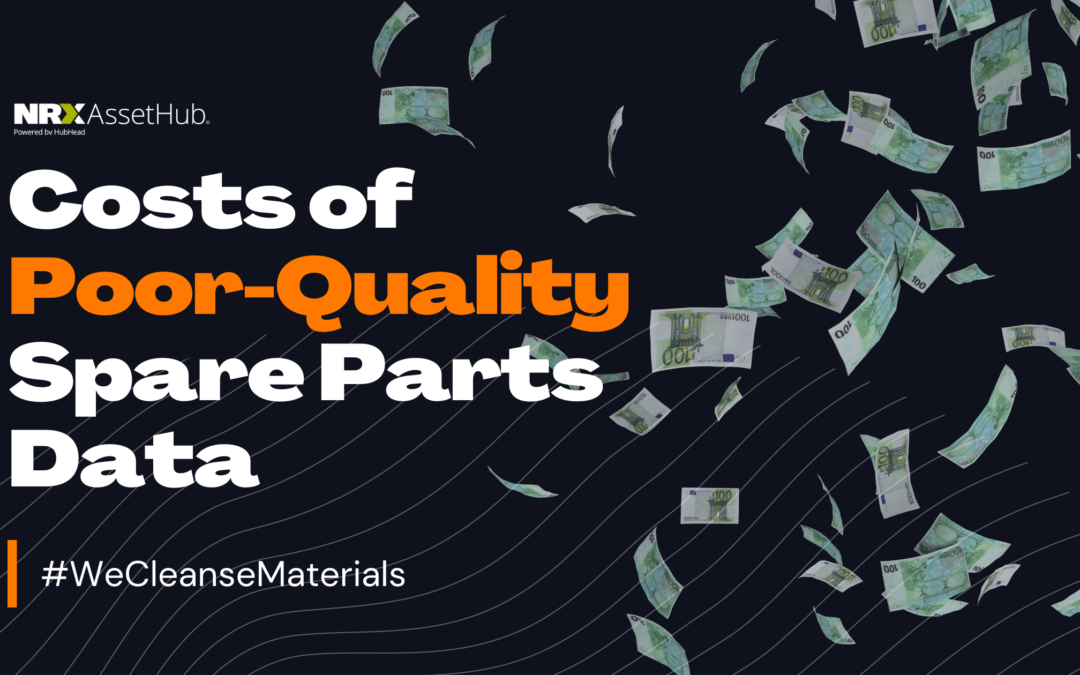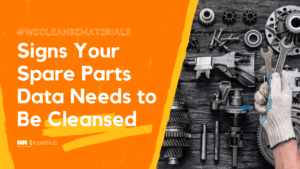Asset-intensive organizations rely heavily on effective spare parts management to reduce costs while keeping operations running smoothly. Effective spare parts management and optimization include stocking the recommended spare parts for critical assets, eliminating duplicate spare parts to reduce inventory costs, and having clear and available documentation that accurately identifies the parts required to maintain assets and complete work orders.
If your EAM system contains poor-quality spare parts data, it can have various impacts on your spare parts management.

Duplicate Parts Are Stocked
Information on where and how to procure spare parts may be already set up in your EAM system or, often, it may be necessary to place a rush order for the part. This results in duplicate entries of parts being entered into the system and unnecessary expenses.
Often, your parts list in your system becomes filled with inconsistently named parts, duplicates, obsolete parts, and other bad information. This makes it challenging for maintenance workers to find the information they need to compete work orders, resulting in unnecessary delays and downtime, expensive procurements, and more.
Duplicate Parts Are Stocked Critical Spare Parts Being Out of Stock Must Be Expedited
To avoid extended production outages, companies will stock what they believe to be the critical spare parts for key assets. They use data to determine which parts are critical, and the optimal number of parts to stock in each case. If the data they use to make these determinations is inaccurate, they stock the wrong parts, or stock insufficient quantities.
If a critical spare part is required that is not available in your parts inventory, you may need to speed up the process of ordering and obtaining the part. This can be incredibly costly, time-consuming, and can result in unplanned downtime.
Poor Parts Descriptions and Ambiguous Data
Maintenance inefficiencies can occur because your spare parts data contains descriptions that do not adhere to any sort of naming convention, or your spare parts are not classified with relevant characteristics recorded. These scenarios make it difficult for maintenance technicians to understand spare part descriptions and locate parts. As a result, maintenance workers may spend significant amounts of time searching for parts within the EAM system and wrench time is decreased.
Overall, poor-quality spare parts data is costly, and the impacts go beyond these examples. Some other ways poor-quality spare parts data can impact your company include the following:
- Stocking of spare parts for decommissioned equipment
- Growing inventories of spare parts
- Increased capital spending on spare parts
- Missed opportunities to reduce inventory
Consider Completing a Materials Cleanse to Optimize Your Spare Parts Data
If your company is struggling with poor-quality spare parts data, then a materials cleanse is a great way to review and cleanse your data to see improvements to your maintenance processes and avoid unnecessary costs.
If you would like to learn more about how our solutions can help you undergo an effective materials cleansing project, book a demo, and our team would be happy to help you!
Your EAM is Only as Good as the Data you Feed it
Strategically Source Spare Parts and Spend Less with Materials Cleansing
Signs Your Spare Parts Data Needs to be Cleansed
Share this article




